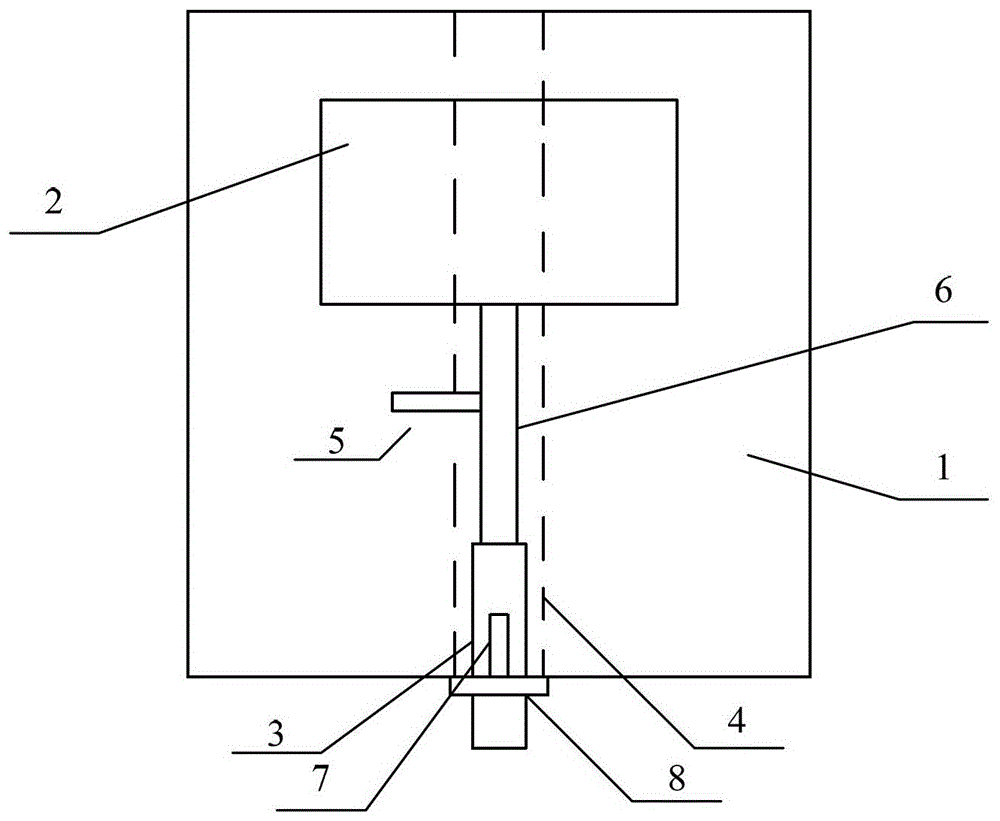New s-band high-gain omnidirectional array antenna
An array antenna and high-gain technology, applied in the field of high-gain omnidirectional antenna arrays, can solve the problems of unable to solve the problem of omnidirectional transmission of wireless signals, low gain, limited communication distance, and inability to meet the communication system, etc. Addresses typically narrow bandwidth, high gain effects
- Summary
- Abstract
- Description
- Claims
- Application Information
AI Technical Summary
Problems solved by technology
Method used
Image
Examples
Embodiment 1
[0026] see figure 1 As shown, the new S-band high-gain omnidirectional array antenna of the present invention is composed of an antenna unit, and the antenna unit includes: a dielectric plate 1, a radiation patch 2, a feeder input terminal 3, a ground plate 4, and a feeder 6. In addition, Include matching stub 5;
[0027] The ground plate 4, the radiation patch 2, the feeder input end 3 and the matching stub 5 are distributed on the front and rear surfaces of the dielectric board 1;
[0028] The radiation patch 2 is connected to the feeder 6, the feeder 6 is connected to the line input end 3, the feeder input end 3 is connected to the inner core 7 of the coaxial connector, and the grounding plate 4 is connected to the sheath 8 of the coaxial connector; The shaft connector is a 50Ω SMA connector.
[0029] The antenna of the present invention uses a rectangular patch as the radiation patch 2, and adjusts the length and width of the radiation patch 2 to control the frequency ra...
Embodiment 2
[0033] see figure 1 and 2 As shown, the S-band novel high-gain omnidirectional array antenna of the present invention is slightly different from Embodiment 1 in that the number of antenna elements is different. According to the requirements of the communication system, the number of elements of the array antenna can be adjusted, which can be 2, 3, or even 5-8 antenna units can be connected in series, and it is optimal to form an array of 4 antenna units connected in series.
[0034] When forming an array, after the radiation patches 2 of each antenna unit are connected in series through the feeder 6, the feeder 6 is then connected to the input end 3 of the feeder, and the matching stubs 5 of each antenna unit are distributed on the left and right sides of the feeder 6 at intervals, see figure 2 .
[0035] However, as the number of antenna units increases, the height of the antenna will increase sharply, and as the number of antenna units increases to a certain extent, the i...
PUM
 Login to View More
Login to View More Abstract
Description
Claims
Application Information
 Login to View More
Login to View More - R&D
- Intellectual Property
- Life Sciences
- Materials
- Tech Scout
- Unparalleled Data Quality
- Higher Quality Content
- 60% Fewer Hallucinations
Browse by: Latest US Patents, China's latest patents, Technical Efficacy Thesaurus, Application Domain, Technology Topic, Popular Technical Reports.
© 2025 PatSnap. All rights reserved.Legal|Privacy policy|Modern Slavery Act Transparency Statement|Sitemap|About US| Contact US: help@patsnap.com



